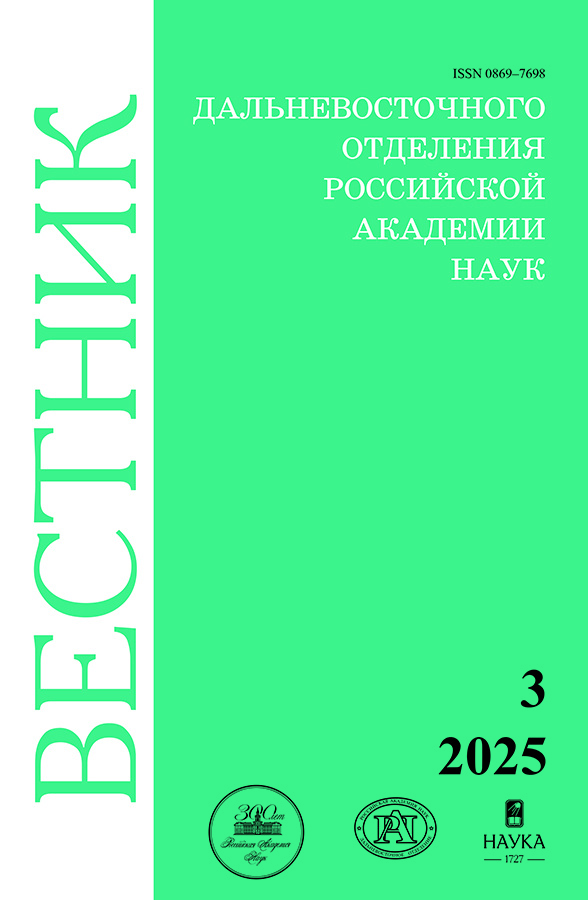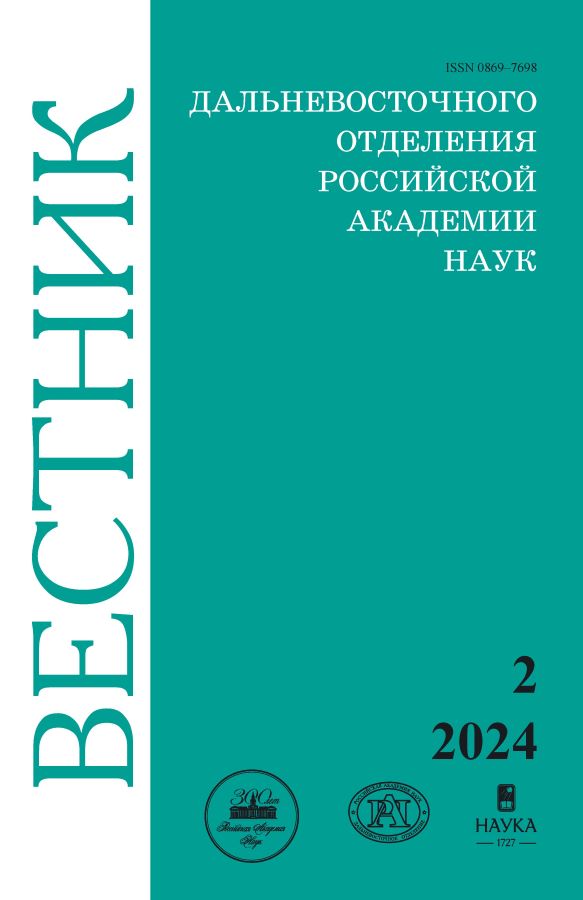The problem of antibioticresistance. Secondary plant metabolites: antibacterial properties and application prospects
- Authors: Yerkin A.A.1
-
Affiliations:
- Orenburg State University
- Issue: No 2 (2024)
- Pages: 199-212
- Section: Chemical Sciences
- URL: https://permmedjournal.ru/0869-7698/article/view/676109
- DOI: https://doi.org/10.31857/S0869769824020179
- EDN: https://elibrary.ru/lbzlqk
- ID: 676109
Cite item
Full Text
Abstract
The review examines the problem of antibiotic resistance in the world and the causes of resistance, as well as a way to overcome this problem. One of the ways to overcome it is the use of secondary metabolites of plants with antibacterial properties. The review includes a large number of studies on the mechanisms of action of the antibacterial properties of secondary metabolites on bacterial cells and the possibility of combining them with various antibiotics to accumulate bactericidal and bacteriostatic effects and overcome the problem of resistance of microorganisms to antibiotics.
Full Text
About the authors
Askar A. Yerkin
Orenburg State University
Author for correspondence.
Email: askartlegenov12@gmail.com
ORCID iD: 0000-0003-3495-1608
Master’s Student
Russian Federation, OrenburgReferences
- Christopher J. L., Murray K., Shunji I., Fablina Sh., Swetschinski L., Aguilar G. R., Gray A. Global burden of bacterial antimicrobial resistance in 2019: a systematic analysis. Lancet. 2022;399:629–655.
- Review on antimicrobial resistance 2016. URL: https://amr-review.org/sites/default/files/160518_Final%20paper_with%20cover.pdf (date of application: 09.10.2023).
- Review on antimicrobial resistance 2014. URL: https://amr-review.org/sites/default/files/AMR%20Review%20Paper%20-%20Tackling%20a%20crisis%20for%20the%20health%20and%20wealth%20of%20nations_1.pd (date of application: 09.10.2023).
- Zuk M., Dorotkiewicz-Jach A., Drulis-Kawa Z. Bactericidal activities of GM flax seedcake extract on pathogenic bacteria clinical strains. BMC Biotechnology. 2020;(14):70–75.
- Antibiotic resistance threats in the United States. US Department of Health and Human Services; US Centers for Disease Control and Prevention. 2019;(12):148–152.
- Prestinaci F., Pezzotti P., Pantosti A. Antimicrobial resistance: a global multifaceted phenomenon. Pathogens Global Health. 2018;(7):309–318.
- WHO. Global action plan on antimicrobial resistance 2015. URL: https://www.who.int/ru/publications/i/item/9789241509763 (date of application: 10.10.2023).
- Naylor N. R., Atun R., Zhu N. et al. Estimating the burden of antimicrobial resistance: a systematic literature review. Antimicrobial Resistance and Infection Control. 2018;(25):7–58.
- CassiniA., Högberg L. D., Plachouras D.et al. Attributable deaths and disability-adjusted life-years caused by infections with antibiotic-resistant bacteria in the EU and the European Economic Area in 2015: a population-level modelling analysis. Lancet Infectious Diseases. 2019;(1):56–66.
- Lim Ch., Takahashi E., Hongsuwan M. et al. Epidemiology and burden of multidrug-resistant bacterial infection in a developing country. Elife. 2016;(5):518–582.
- Temkin E., Fallach N., Almagor J. et al. Estimating the number of infections caused by antibiotic-resistant Escherichia coli and Klebsiella pneumoniae in 2014: a modelling study. Lancet Global Health. 2018;6:969–979.
- Rudd K. E., Johnson S. C., Agesa K. H. et al. Global, regional, and national sepsis incidence and mortality, 1990–2017: analysis for the Global Burden of Disease Study. Lancet. 2020;395:200–211.
- Ge M., Chen Z., Russell H., Onishi H. R., Kohler J., Silver L. Vancomycin derivatives that inhibit peptidoglycan biosynthesis without binding D-Ala-D-Ala. Science. 1999;284(5413):507–511.
- Olaitan A. O. Mechanisms of polymyxin resistance: acquired and intrinsic resistance in bacteria. Frontiers in Microbiology. 2022;(26):605–643.
- Moffatt J. H., Harper M., Harrison P., Hale J. D., Vinogradov E. Colistin resistance in A. baumannii is mediated by complete loss of lipopolysaccharide production. Antimicrobial Agents and Chemotherapy. 2018;(54):4971–4977.
- Eliopoulos G. M. Quinolone resistance mechanisms in pneumococci. Clinical Infectious Diseases. 2020;(15):350–356.
- Hooper D. C., Jacoby G. A. Mechanisms of drug resistance: quinolone resistance. Annals New York Academy Sciences. 2018;1354(1):12–31.
- Jacoby G. A. Mechanisms of resistance to quinolones. Clinical Infectious Diseases. 2005;(15):120–126. doi: 10.1086/428052.
- Hooper D. C., Jacoby G. A. Topoisomerase inhibitors: Fluoroquinolone mechanisms of action and resistance. Cold Spring Harbor Perspectives in Medicine. 2016;6(9). a025320.
- Sheed K. A., Phelan J. E. Characterization of rifampicin-resistant Mycobacterium tuberculosis in Khyber Pakhtunkhwa. Scientific Reports. 2021;11(1):141–194.
- Campbell E. A. Structural mechanism for Rifampicin inhibition of bacterial RNA polymerase. Cell. 2022;104(6):901–912.
- Koch A., Mizrahi V., Warner D. F. The impact of drug resistance on Mycobacterium tuberculosis physiology: what can we learn from Rifampicin? Emerging Microbes and Infections. 2014;3(3):17–25.
- Zaw M. T., Emran N. A., Lin Z. Mutations inside Rifampicin-resistance determining region of rpoB gene associated with Rifampicin-resistance in Mycobacterium tuberculosis. Journal of Infection and Public Health. 2018;11(5):605–610.
- Zampieri M. The genetic underground of antibiotic resistance. Science. 2021;(371):783–784.
- Daoud Z., Kourani M., Saab R. et al. Resistance of Streptococcus pneumoniae isolated from Lebanese patients between 2005 and 2009. Revista Espanola de Quimioter. 2020;24(2):84–90.
- Chen H., Wang X., Yin Y. et al. Molecular characteristics of oxazolidinone resistance in enterococci from a multicenter study in China. BMC Microbiology. 2019;19(1):162.
- Konovalova A., Kahne D., Silhavy Th. Outer Membrane Biogenesis. Annual Review of Microbiology 2017;(71):539–556.
- Mickiewicz K. M., Yoshikazu K., Drage L. Possible role of L-form switching in recurrent urinary tract infection. Nature Communication. 2019;10(1).4379.
- Greene N. P., Kaplan E., Crow A., Koronakis V. Antibiotic resistance mediated by the MacB ABC transporter family: A structural and functional perspective. Frontiers in Microbiology. 2018;(9):950.
- Studemeister A. E., Quinn J. P. Selective imipenem resistance in Pseudomonas aeruginosa associated with diminished outer membrane permeability. Antimicrobial Agents and Chemotherapy. 2018;32(8):1267–1268.
- Kornelsen V., Kumar A. Update on multidrug resistance efflux pumps in Acinetobacter spp. Antimicrobial Agents and Chemotherapy. 2021;65(7):514–521.
- Raskin I., Ribnicky D., Komarnytsky S. et al. S. Plants and human health in the twenty-first century. Trends in Biotechnology. 2002;20(12):522–531.
- Hikal D. Antibacterial activity of piperine and black pepper oil. Biosciences. Biotechnology Research Asia. 2018;15(4):877–880.
- Khameneh B., Iranshahy M., Ghandadi M. et al. Investigation of the antibacterial activity and efflux pump inhibitory effect of co-loaded piperine and gentamicin nanoliposomes in methicillin-resistant Staphylococcus aureus. Drug Development and Industrial Pharmacy. 2015;41(6):989–994.
- Mgbeahuruike E. E. et al. Antimicrobial and synergistic effects of commercial piperine and piperlongumine in combination with conventional antimicrobials. Antibiotics (Basel). 2019;8(2):55.
- Nagendran Tharmalingam, Sa-Hyun Kim, Min Parket al. Inhibitory effect of piperine on Helicobacter pylori growth and adhesion to gastric adenocarcinoma cells. Infectious Agents and Cancer. 2014;9(1):43–45.
- Amit Kumar Tripathi, Anup Kumar Ray, Sunil Kumar Mishra. Molecular and pharmacological aspects of piperine as a potential molecule for disease prevention and management: evidence from clinical trials. Beni-Suef University Journal of Basic and Applied Sciences. 2022;11(1):16.
- Somma A., Canè C., Rotondo N. et al. A comparative study of the inhibitory action of berberine derivatives on the recombinant protein FtsZ of E. coli. International Journal of Molecular Sciences. 2023;24(6):5674.
- Soltani R., Fazeli H. et al. Evaluation of the synergistic effect of Tomatidine with several antibiotics against standard and clinical isolates of Staphylococcus aureus, enterococcus faecalis, Pseudomonas aeruginosa and Escherichia coli. Iranian Journal of Pharmaceutical Research. 2017;16(1):290–296.
- Siriyong T. Conessine, as resistance-modifying agents against extensively drug-resistant Acinetobacter baumannii. Microbial Drug Resistance. 2022;(22):273–282.
- Jeong Yoon Kim, Ju Yeon Kim, Jae Yeon Park et al. Synergistic bactericidal effects of carvone and β-lactams against Xanthomonas campestris pv. vesicatoria. Applied Biological Chemistry. 2023;(66):45–58.
- Althunibat O. Y., Qaralleh H., Al-Dalin S.Y.A. et al. Effect of thymol and carvacrol, the major components of Thymus capitatus on the growth of Pseudomonas aeruginosa. Journal of Pure and Applied Microbiology. 2016;(10):367–374.
- Klancnik A., Sikic M., Smole M. S. Jejuni planktonic and biofilm cells, mediated via the CmeABC efflux pump. Journal of Applied Microbiology. 2017;(122):65–77.
- Vestergaard M. Antibacterial and antifungal properties of resveratrol. International Journal of Antimicrobial Agents. 2019;(53):716–723.
- Hotra A., Manuel S., Biucovic G. et al. Deletion of a unique loop in the mycobacterial F-ATP synthase γ subunit sheds light on its inhibitory role in ATP hydrolysis-driven H(+) pumping. FEBS Journal. 2016;283(10):1947–1961.
- Zou D., Xie K., Wang H., Chen Y., Xie M. Inhibitory effects of Biochanin A on the efflux pump of methicillin-resistant Staphylococcus aureus (MRSA). Wei Sheng Wu Xue Bao. 2014;54(10):1204–1211.
- Kai-Xuan Hu., Xin-Chi Shi., Dong Xu et al. Antibacterial mechanism of Biochanin A and its efficacy for the control of Xanthomonas axonopodis pv. glycines in soybean. Pest Management Science. 2021;77(4):1668–1673.
- Hanski L., Genina N., Uvell H. et al. Inhibitory activity of the isoflavone biochanin A on intracellular bacteria of genus Chlamydia and initial development of a buccal formulation. PLoS ONE. 2014;9(12). e115115.
- Holler J. G., Christensen S. B., Slotved H. C. et al. Novel inhibitory activity of the Staphylococcus aureus NorA efflux pump by a kaempferol rhamnoside isolated from Persea lingue Nees. Journal of Antimicrobial Chemotherapy. 2012;67(5):1138–1144.
Supplementary files










